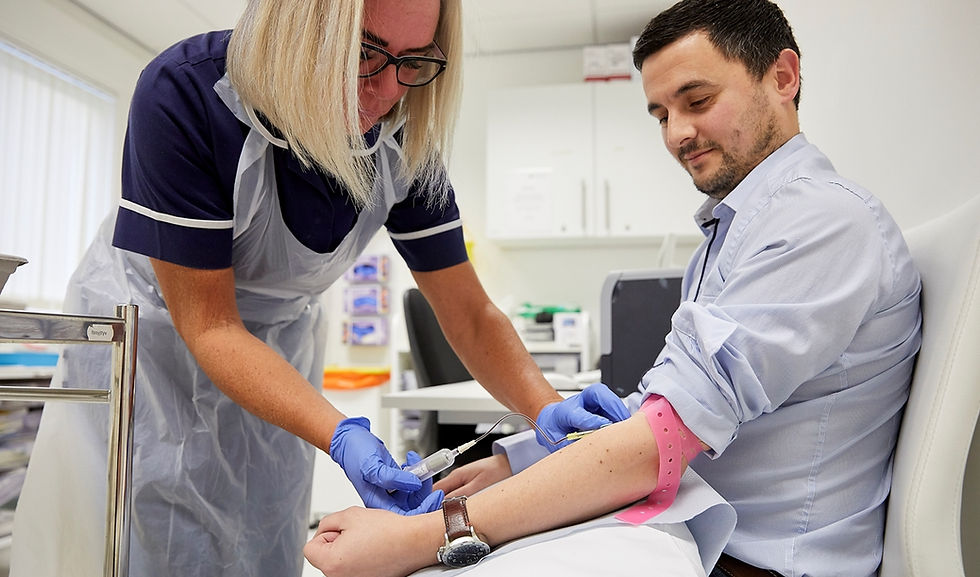How to Interpret Complex STD Test Results Correctly
- Royal Clinic
- Sep 10
- 4 min read
When receiving test results, it can feel overwhelming, especially if multiple medical terms and abbreviations appear. STD Test Dubai results often include laboratory findings, markers, or ranges that are not easy to interpret. Knowing how to read and understand them helps individuals gain clarity and avoid unnecessary confusion. Understanding the purpose of each test and how results are reported is the first step toward interpreting them accurately.
Common Terminologies Found in Results
STD test results often contain abbreviations and terms that may seem complicated. Recognizing these terms can simplify the process:
Reactive/Non-Reactive: Indicates whether an infection marker was detected.
Positive/Negative: Shows the presence or absence of an infection.
Equivocal: Means the result is unclear and may require retesting.
Reference Range: Provides the normal limits used to interpret test values. Learning these terms allows a person to approach the results with better understanding.
The Difference Between Screening and Diagnostic Results
STD screening tests aim to detect possible infections even without symptoms. Diagnostic tests, on the other hand, confirm or rule out an infection when symptoms are present. A screening test may suggest the need for follow-up testing, while diagnostic results are usually more definitive. Knowing this difference can prevent misinterpretation and unnecessary worry.
False Positives and False Negatives Explained
Complex results sometimes involve false positives or false negatives.
A false positive occurs when the test shows an infection even though there isn’t one.
A false negative happens when the test does not detect an existing infection.
These outcomes can be influenced by factors such as the testing method, timing of the test, and the body’s immune response. Awareness of these possibilities helps individuals understand why retesting might be recommended.
Interpreting Blood-Based Test Results
Blood tests are common in STD detection. They usually measure antibodies or antigens produced by the body.
Antibodies: Indicate that the body has responded to an infection, either current or past.
Antigens: Suggest an active infection is present. The presence of antibodies alone does not always confirm a current infection. It can reflect exposure in the past. This is why context and timing matter in interpretation.
Interpreting Swab and Urine Test Results
Swab and urine tests are often used to detect bacterial or viral material. Unlike blood tests, these look for direct evidence of infection. A positive result means the organism is currently present, while a negative result generally indicates absence at the time of testing. However, the accuracy depends on sample collection and timing, making follow-up important when symptoms persist.

Understanding Time Frames for Accuracy
Every infection has a window period—the time between exposure and when it can be accurately detected. Testing too early may produce misleading results. For example, certain infections may only be visible in test results after several days or weeks. Knowing about these time frames ensures results are interpreted with realistic expectations.
Why Context Matters in Interpretation
STD test results are rarely interpreted in isolation. They should be considered alongside factors such as exposure history, symptoms, and type of test performed. A single test result might not provide the full picture, which is why combining information leads to more accurate understanding.
Steps to Make Interpretation Easier
Individuals can make interpreting their results less stressful by:
Familiarizing themselves with common result formats.
Comparing terms to the reference ranges provided.
Not panicking if results appear unusual, as many terms require further clarification. Approaching the results calmly allows for a clearer understanding of what they mean.
The Role of Retesting
Retesting is common when initial results are unclear, fall within an equivocal range, or are taken too soon after exposure. This step helps confirm the accuracy of the findings and reduces uncertainty. Recognizing that retesting is a normal part of the process prevents unnecessary stress.
FAQs
What does a borderline or equivocal result mean?
A borderline or equivocal result means the test was inconclusive. It is not a confirmation of infection. In such cases, retesting after some time is usually suggested to obtain a clearer answer.
Why do results sometimes differ between tests?
Different tests may use varying detection methods. Some tests measure antibodies, while others detect the actual organism. Timing also influences differences, as certain tests work best at different stages of infection.
How long after possible exposure should testing be done?
The timing depends on the specific infection being tested. Some can be detected within days, while others require weeks. Testing during the recommended window period provides the most reliable results.
Can someone test negative and still have an infection?
Yes, this is possible due to the window period or test sensitivity. A negative result shortly after exposure does not always guarantee the absence of infection. Retesting later often provides confirmation.
Final Thoughts
Interpreting STD Test in Dubai results requires patience, context, and awareness of how different tests function. Understanding key terms, recognizing the role of window periods, and knowing the possibility of false results all contribute to clearer interpretation. While test results can initially feel intimidating, approaching them with knowledge makes the process more manageable and less stressful. Ultimately, results are just one part of the larger picture, and understanding them correctly is a vital step toward clarity and peace of mind.





Comments